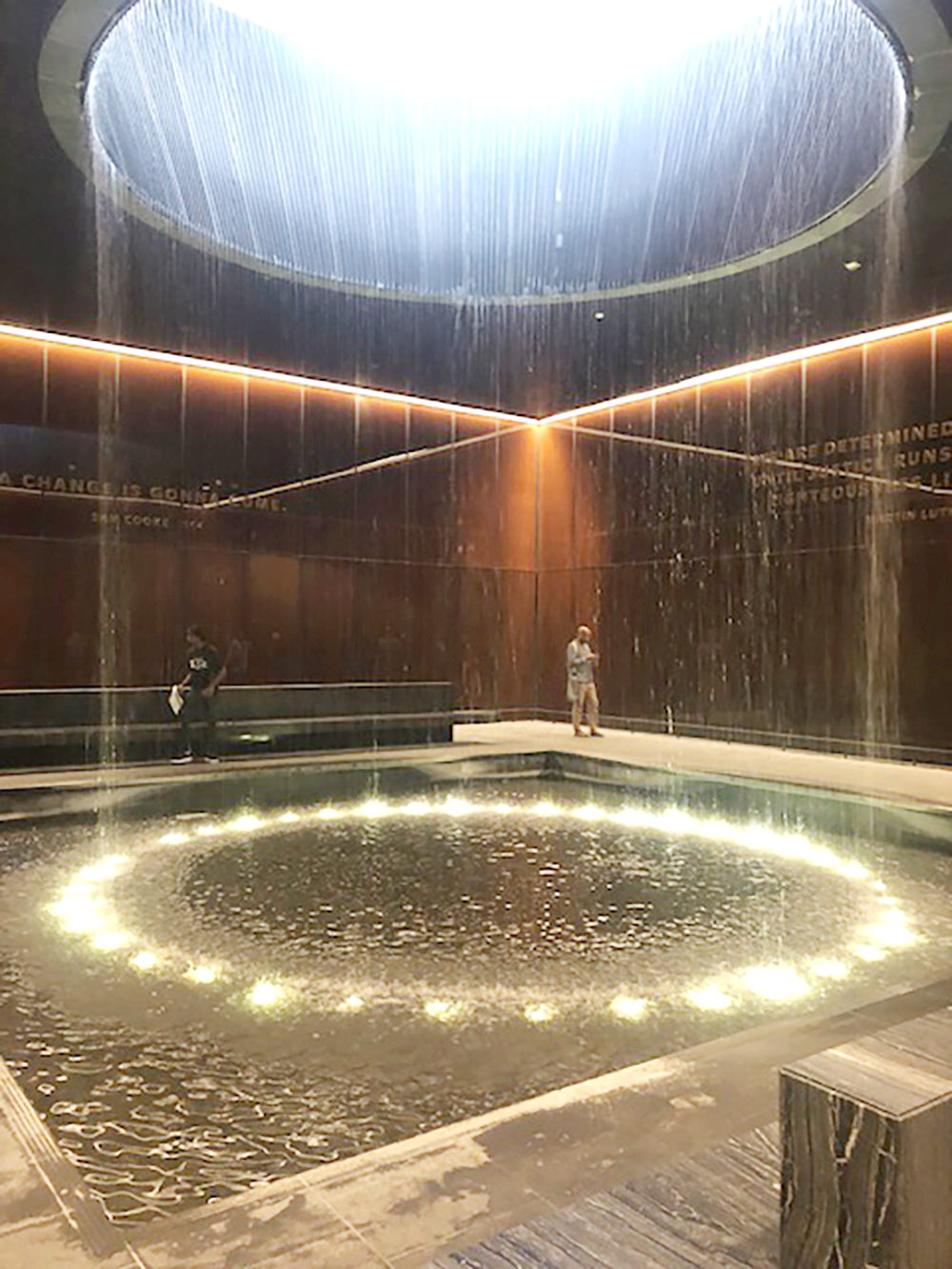Endurance, resilience, and victory (Part A)
Singled out are Duke Ellington, Louis Armstrong, Ella Fitzgerald in music and Muhammad Ali, Jackie Robinson, Wilma Rudolph in athletics.

The United States Holocaust Memorial Museum in Washington, D.C. is a reminder of the horrors experienced by the families of a significant part of the American population, the genocide that Adolf Hitler visited on the Jewish people.
The Holocaust was orchestrated by Nazi Germany during World War II. It resulted in the systematic murder of approximately six million Jews, along with millions of other victims, including Romani people (the gypsies), Poles, Soviet prisoners of war, the disabled, and political dissidents. Opened in 1993, the museum was established to educate visitors and ensure that its lessons are not forgotten.
Located by the National Mall near the Washington Monument, its exterior’s stark, angular lines sets a somber tone. Inside, the exhibits guide visitors through the chronological and thematic aspects of the Holocaust. Beginning with the rise of the Nazi party in the 1930s, the progression of anti-Semitism, the evolution of Nazi policies, including forced labor camps and ghettos, before moving on to the implementation of mass murder in extermination camps.
The museum also tells stories of individuals through diaries, letters, photographs, and testimonies. One exhibit is designed as a fictional child’s diary, presenting a heart-wrenching view of the Holocaust through a child’s eyes.
There are images, artifacts, and displays that reveal the grim realities of the time—piles of shoes, clothing, and personal belongings seized from victims, giving an idea of the immense scale of the tragedy.
On the opposite side of the mall is the National Museum of African-American History and Culture. It opened in 2016 and, as the name proclaims, it is devoted to the rich and complex past of Black Americans.
The museum’s exterior is a striking blend of contemporary design and elements that pay homage to African and African American history, an unexpected contrast with the white marble and limestone of the adjacent buildings. The three-tiered museum is wrapped in an intricate lattice pattern (the Corona) inspired by African design traditions.
The museum’s interior is just as remarkable. One takes an elevator up to the third level and descends on ramps that takes one through time and history. The top level is about the wealthy and highly cultured African kingdoms whose populations were exploited and sold to slavery in Europe, the Americas, and even Asia as much by foreign slavers as by their own leaders.
In descending to the lower levels, one learns the hardships and death the captives endured in slave camps and ships that transported them like cattle, the hard life they led as slaves mainly in North America and the Caribbean. In the North American British colonies, they labored in the factories of northern states and in the tobacco, rice, indigo, and later cotton and sugar plantations of the southern states. Many were sold to plantations owned by the French and the British in Haiti, Jamaica and elsewhere in the Caribbean.
The exhibits go on to describe the abolitionist movement that ended slavery in Britain and other European countries and most US Northern states; conditions in the plantations of the US South, where slaves were treated not as humans but as chattels; how families were broken up and sold separately; the “Underground Railroad” that helped bring escaped slaves to slave-free states and Canada; the Civil War and emancipation; the Reconstruction Era, the difficult period when former slaves were theoretically free but with no skills and knowledge to live a decent life; segregation; the Civil Rights Movement, all the way to Rosa Parks who refused to give up her bus seat; and Martin Luther King.
There are rooms celebrating African-American achievements. Singled out are Duke Ellington, Louis Armstrong, Ella Fitzgerald in music and Muhammad Ali, Jackie Robinson, Wilma Rudolph in athletics. The story of Jesse Owens’ triumphant performance in the 1936 Berlin Olympics is highlighted, demonstrating the power of sports to transcend racial prejudices. That a Black, in the person of Barack Obama, became President after all that African Americans went through is as strong a message as one can get.
I was a graduate student in the Georgia in the late 1950s and experienced how segregation was. There was not a single Black at Georgia Tech. There were separate CRs for “Colored” and “Whites.” Blacks were supposed to sit from the rear of buses and Whites from the front. Blacks were barred from many restaurants. Even churches and religious organizations were segregated; Foreigners like me were classified as White and both Blacks and Whites waved me to sit toward the fronts of buses, but there was still a difference. A friend thought of doing me a favor and without my knowledge proposed me for admission to Newman House, a Catholic student center and I was turned down.
The museum has artifacts including a real slave cabin, but Black history and culture are told mainly and effectively through photographs, prints, audio-visuals, and computer technology.
Visits end in the Contemplative Court where one can reflect on man’s inhumanity to man and lessons on courage, triumph, and defeat. It is a large dimly lit room with a large pool at the center fed by rain-like streams of water from above. Walls are lined with quotes from luminaries like Maya Angelou, writer, poet, and civil rights activist, reminding everyone that the struggle for justice and equality never ends.
The experience compels visitors—American and foreigner alike—to think not only of past oppression and exploitation, but also of resilience, endurance, and the enduring struggle for freedom, civil rights, and equality and how different cultures contribute to a nation’s identity.
To be continued
Comments are cordially invited, addressed to [email protected].